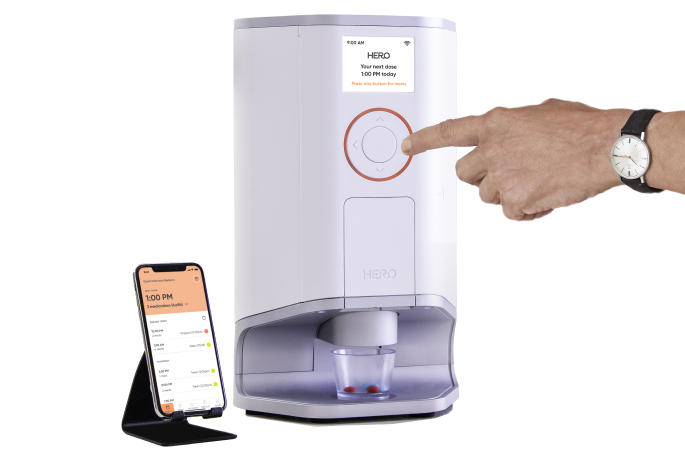This is what a caregiver-friendly workplace looks like

According to the AARP, 61 percent of employees work full or part-time before going home to their second job: caregiving for an aging loved one. Managing both caregiving tasks and work responsibilities can be challenging, and without support, it can lead to financial hardships and declines in both physical and mental health – all of which can directly impact an individual’s performance at work.
With significant support, a place of employment can transform into a caregiver-friendly environment with maximized productivity, reduced healthcare costs, and a means of attracting and retaining talent.
While the pandemic has helped shine a light on the dilemma faced by unpaid caregivers, not all workplaces have caught up in providing support for their workers. Take a look at the many ways an employer can create a caregiver-friendly environment.
Benefits that support caregiving employees
Supporting caregivers in the workplace requires an understanding of their reality in order to provide benefits that best meet their needs.
Consider the caregiver in a nine-to-five job who needs to discuss his mother’s newly diagnosed medical condition with a physician. Or the caregiving employee who needs to drive her father to post-surgical physical therapy. Typically, these responsibilities need to be conducted during the same daytime hours that an employee is working.
For some, working remotely allows them to juggle caregiving tasks and work responsibilities. But sometimes, caregivers find themselves in emergency situations that require a larger chunk of their time and attention. Paid leave is one of the most valuable benefits that employers can offer caregiving employees in these scenarios. In a 2020 AARP survey, 39 percent of caregiving employees reported that their workplaces offered paid leave – up from 32 percent in 2015, but still leaving room for improvement.
Employers unable to provide paid leave sometimes adopt other benefits that assist employee caregivers needing time away from work. This may include helping them apply for federal or state benefits, or setting up flex-time arrangements, including the ability to use sick, vacation or personal days for caregiving tasks.
Some employers also provide back-up caregiving service as an added benefit. If a nurse or home health aide doesn’t show up one day, a caregiving employee can access this service for substitute coverage without interruption at work.
Resources to address caregiving employees’ unique needs
Caregiving employees are often under tremendous stress while trying to effectively accomplish two jobs at once. If they are a part of the Sandwich Generation, the responsibilities that come with raising kids are also thrown into the mix. They may know that they need help, but don’t know where to go and don’t have the time to find it. This is where an employer can really offer a helping hand.
By providing the right resources, an employer can save their caregiving employee valuable time and energy. This might include a list of local home health care companies or long-term care communities. These lists are a great start, but local long-term care consultants or coaches are even more equipped to understand the industry and vet these services. Employers going above and beyond may even offer access to elder care lawyers and financial counselors.
Digital resources are beneficial, too. Some employers provide a caregiving portal where caregiving employees can easily find and access all workplace benefits and services. Other digital tools may also help employees organize tasks or facilitate communication with other caregivers. One study of caregiving employees found that the use of an app to coordinate tasks among a caregiver’s personal support network led to a decrease in days needed off of work for caregiving tasks.
Finally, offering a means to reduce stress can have a huge impact on a caregiving employee’s mental health. Some employers offer caregiving support groups; others offer in-house yoga, meditation workshops, or discounts for classes outside of work to look after their employees’ wellbeing.
A workplace culture should be empathetic, supportive and responsive
A workplace’s culture is just as important as the benefits it provides. For caregiving employees, they should feel comfortable sharing their circumstances with their employer. In one 2021 survey, nearly 40 percent of caregiving employees said their employer was not even aware of their caregiving responsibilities!
Many employees worry that an employer’s knowledge of their caregiving responsibilities will impact their performance review or their chance at a promotion. Destigmatizing caregiving employees can go a long way. This might begin with educating all employees, including managers, on what caregiving is and dispelling incorrect perceptions; e.g. using flexible work arrangements does not mean an employee is less committed to their job.
Furthermore, managers should be aware of all policies on caregiving employee benefits, so their direct reports can feel comfortable approaching them about their circumstances and having a productive conversation.
Another means of creating an empathetic workplace culture is by offering a survey to determine what employees need and target working caregivers who may not be aware of the policies that their employer offers.
Final thoughts
As caregivers balance full or part-time jobs with their caregiving responsibilities, more and more employers are recognizing that it is in everyone’s best interest to ensure their employees are receiving the support they need. Hopefully, this article has provided some concrete ideas on how to transform your workplace into an inclusive environment, one in which caregiving employees have the resources and benefits they need and a comfort level to step forward and access them.
Sources
- AARP and The National Alliance for Caregiving. (2020). Caregiving in the U.S. https://www.caregiving.org/wp-content/uploads/2021/01/full-report-caregiving-in-the-united-states-01-21.pdf
- Ozluk, P., Cobb, R., Hoots, A., et al. (2022, April 11). Association Between Mobile App Use and Caregivers’ Support System, Time Spent on Caregiving, and Perceived Well-being: Survey Study From a Large Employer. Journal of Medical Internet Research, 24(4). https://www.jmir.org/2022/4/e28504/
- Homethrive. 2021 Employee Caregiving Survey: The Case for Supporting Employee Eldercare Caregivers. https://info.homethrive.com/2021employeecaregivingsurveyreport
- Nobel, J., Weiss, J., Sherman, C., et al. (2017, September). Supporting Caregivers in the Workplace: A Practical Guide for Employers. https://nebgh.org/wp-content/uploads/2017/11/NEBGH-Caregiving_Practical-Guide-FINAL.pdf
Complex med schedule? We solved it.
Hero’s smart dispenser reminds you to take your meds and dispenses the right dose, at the right time.

The contents of the above article are for informational and educational purposes only. The article is not intended to be a substitute for professional medical advice, diagnosis, or treatment. Always seek the advice of your physician or other qualified clinician with any questions you may have regarding a medical condition or its treatment and do not disregard professional medical advice or delay seeking it because of information published by us. Hero is indicated for medication dispensing for general use and not for patients with any specific disease or condition. Any reference to specific conditions are for informational purposes only and are not indications for use of the device.



